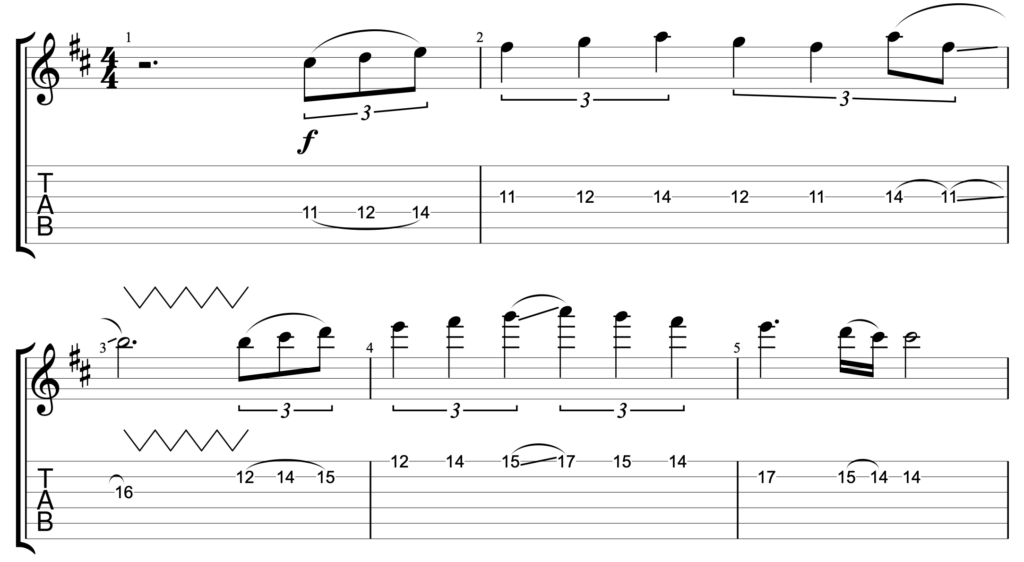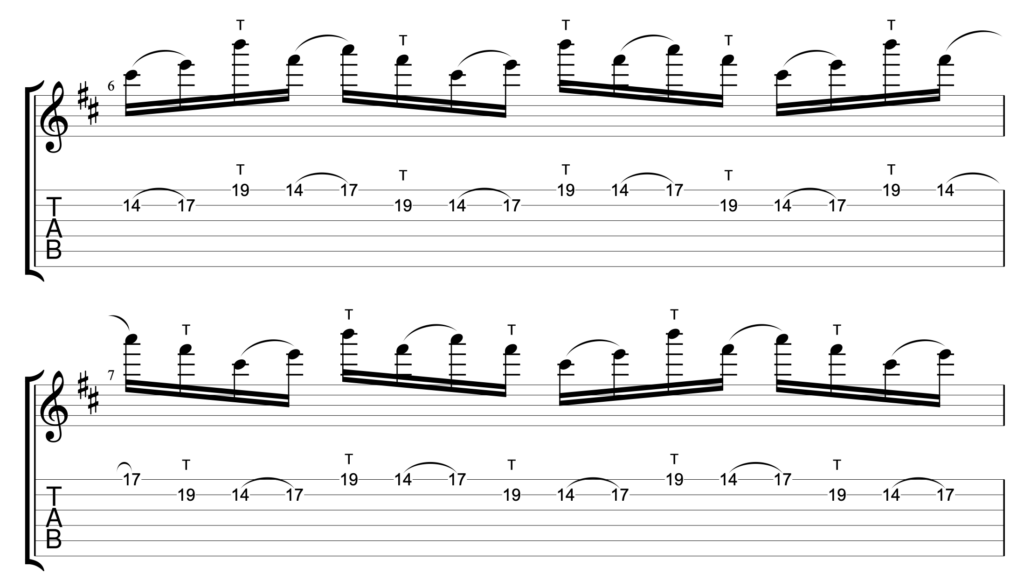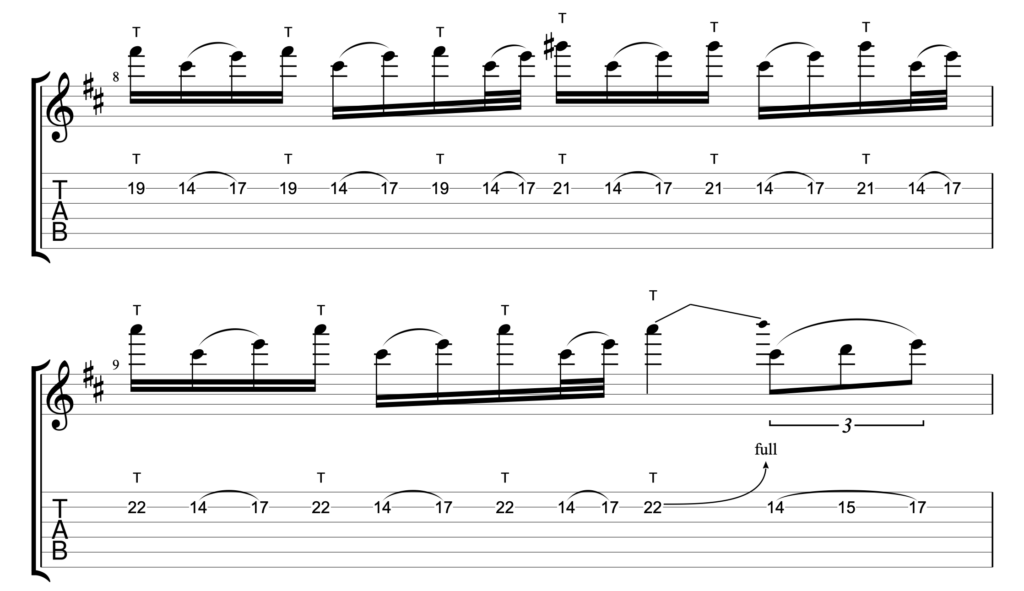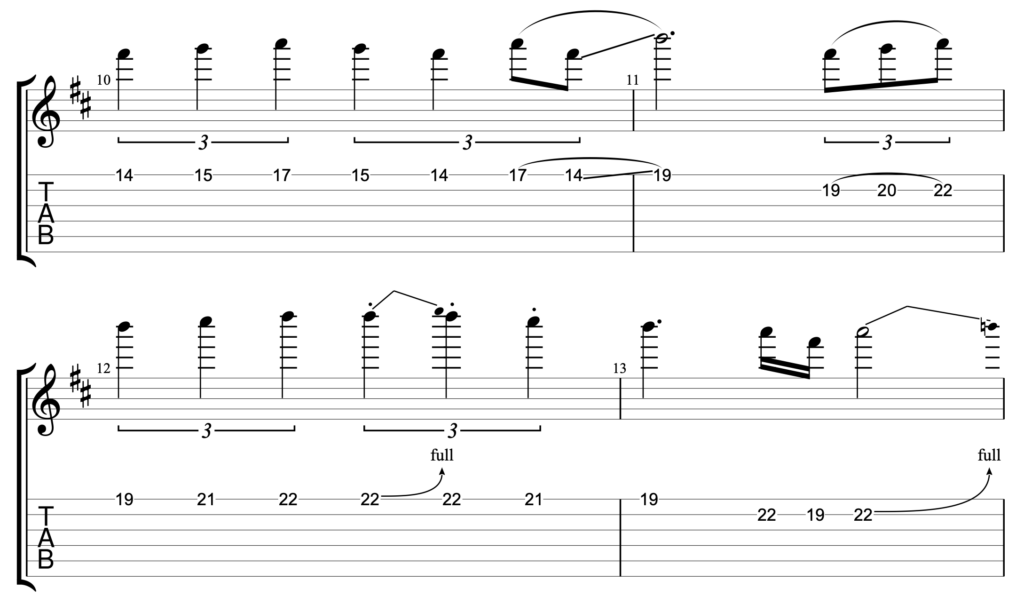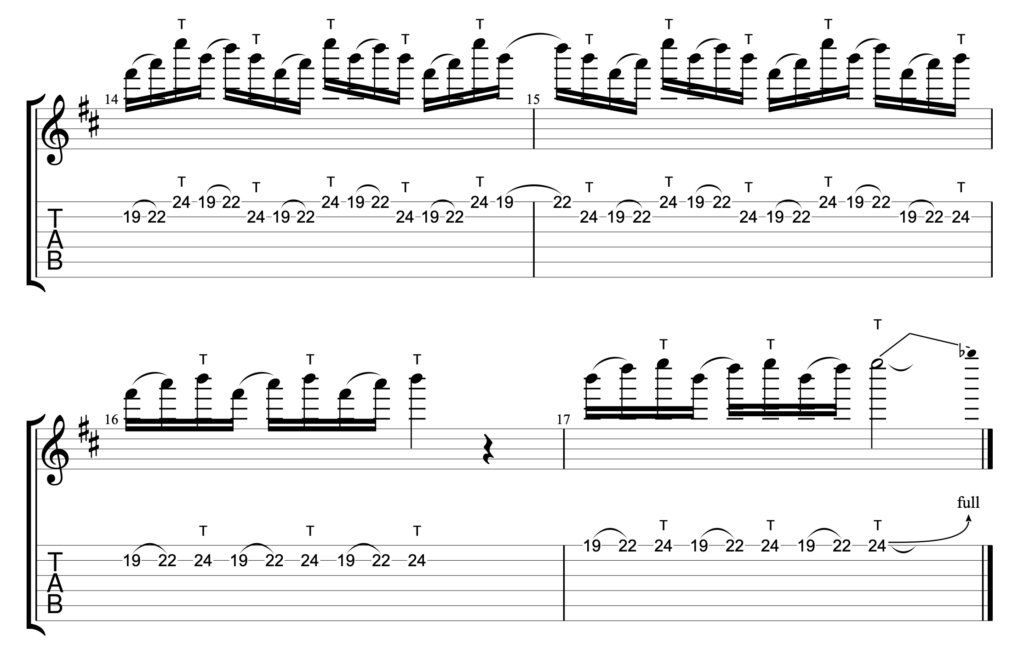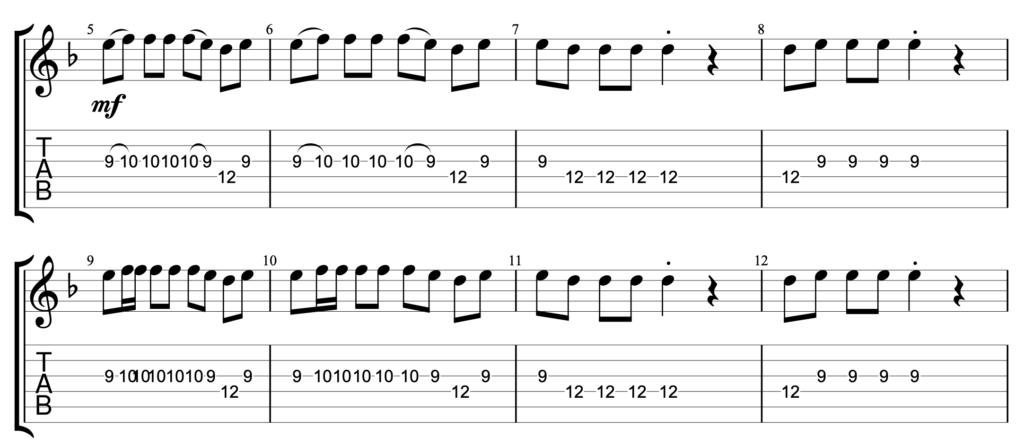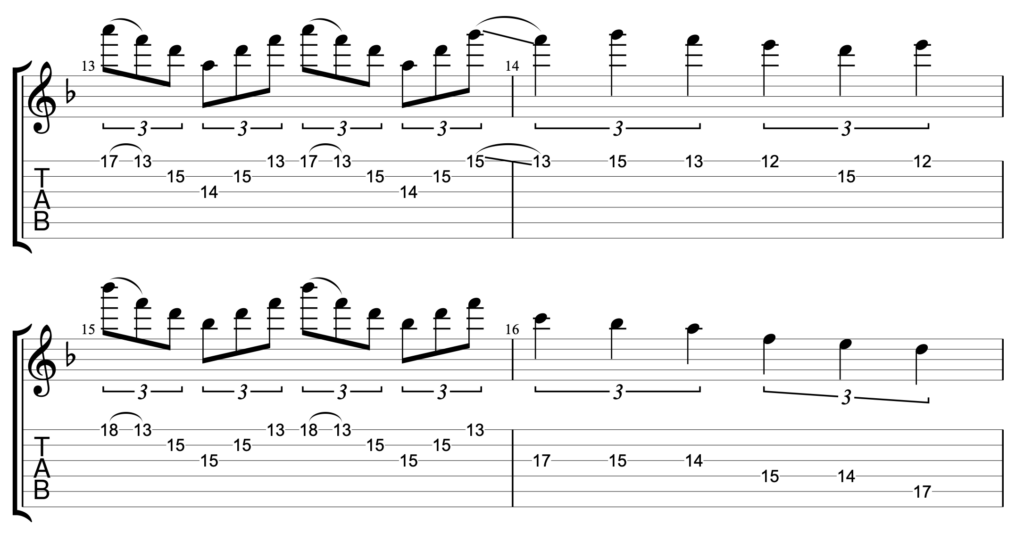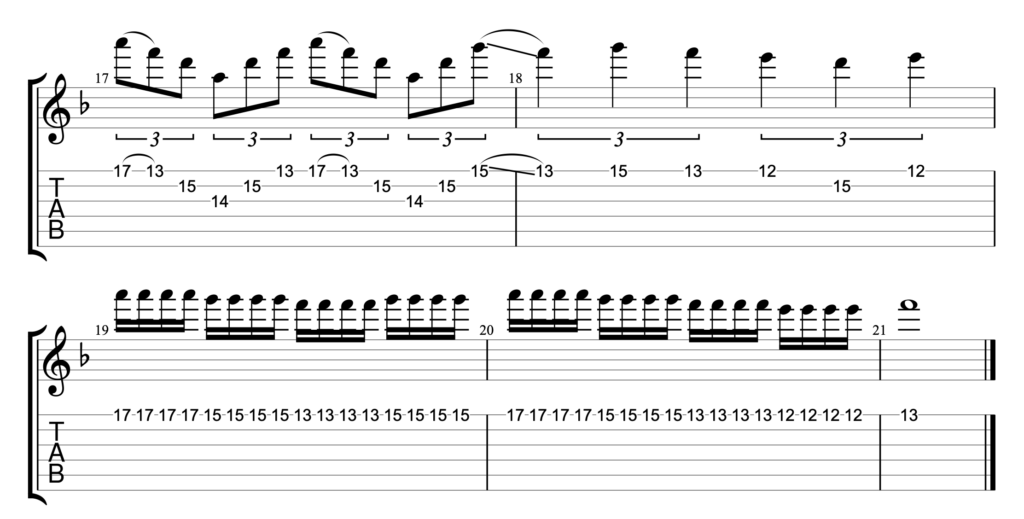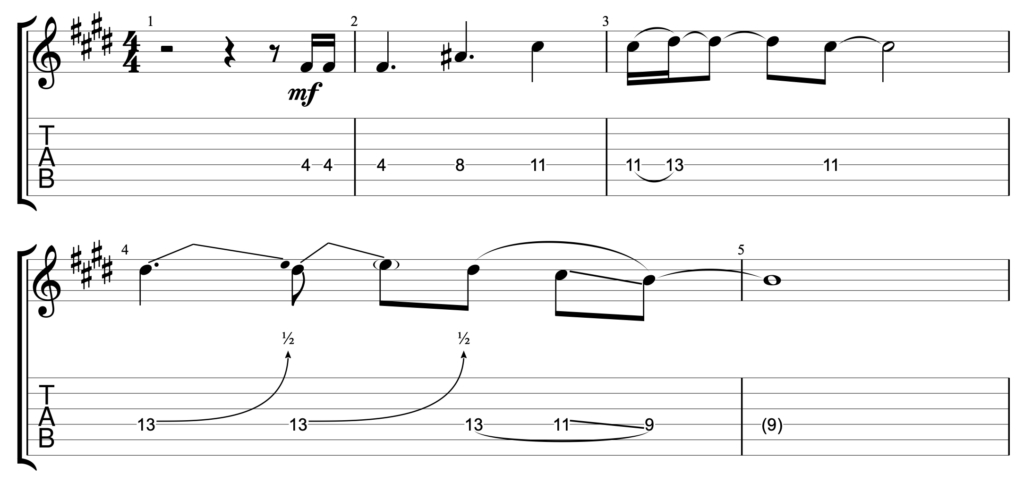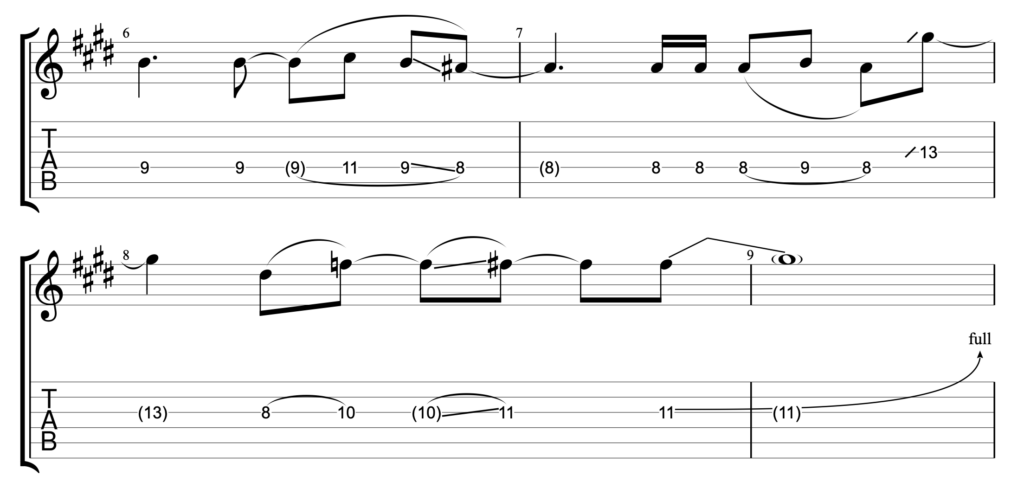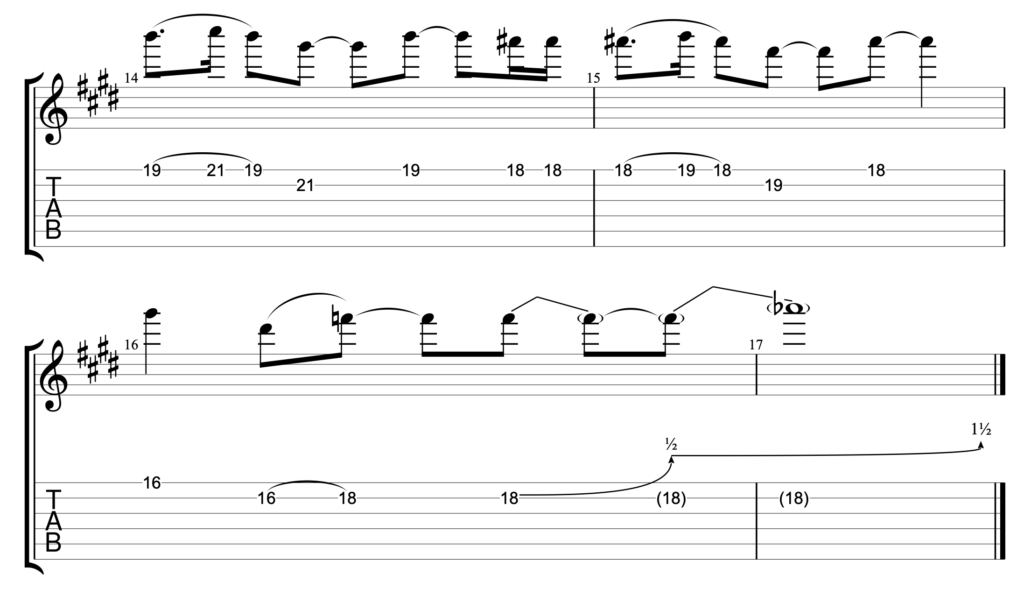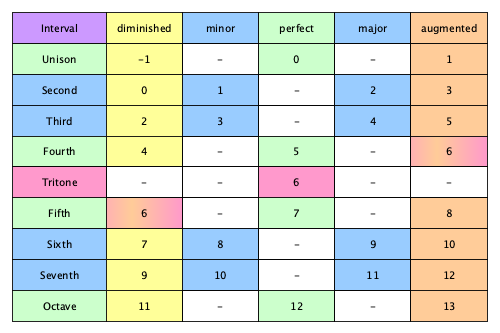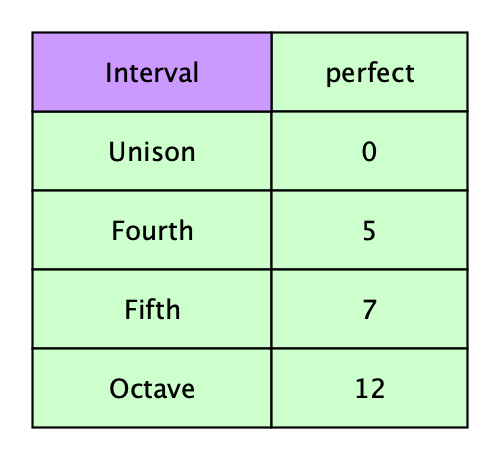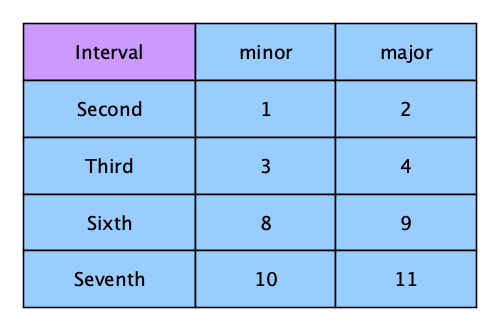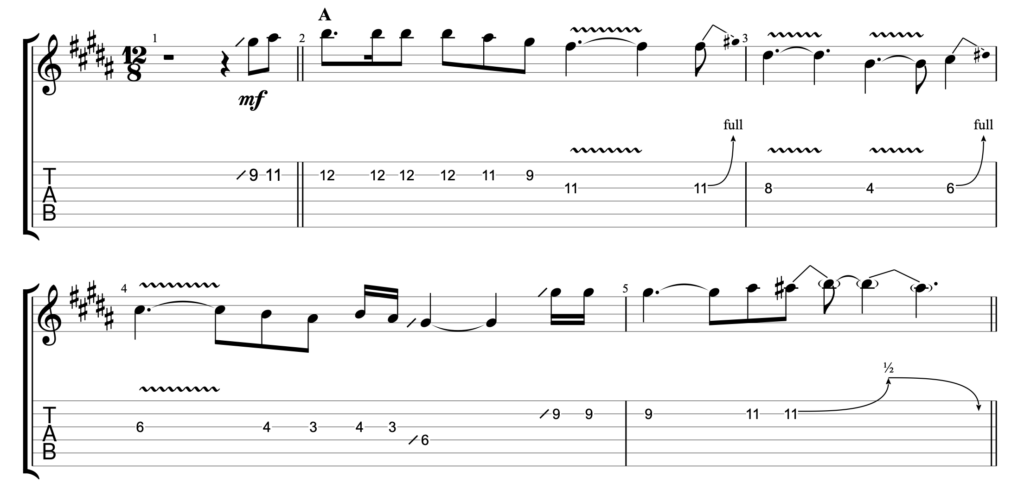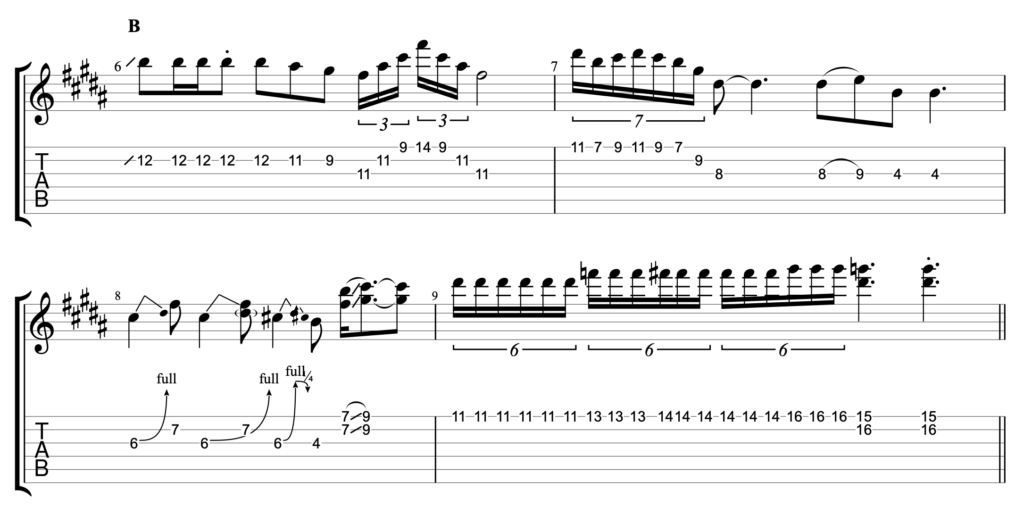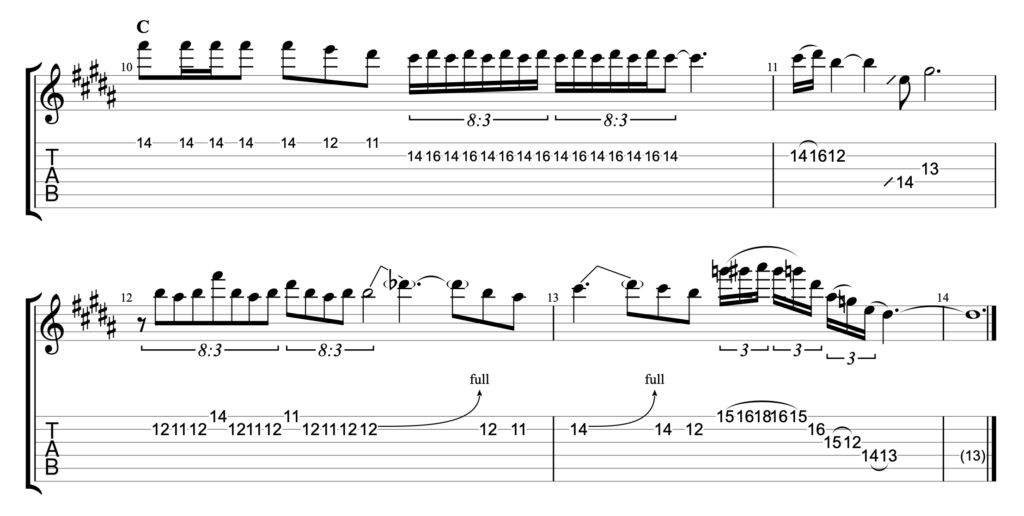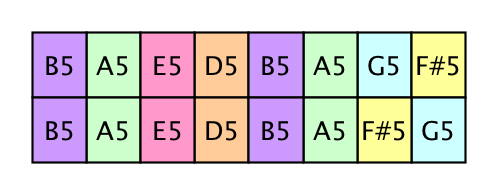This article is part of the series “Level Up! – 42 guitar solos for a better sex life”
Meaning of the Solo
There is always something happening invisible for the public eye.
It is our plight to bring it into daylight!
Most of the time it’s a cat behind the curtain.
Tonal analysis
The chords are exclusively power chords. Root and fifth. Let’s take them apart:
| Akkord | B5 | E5 | D5 | A5 | G5 | F#5 |
|---|---|---|---|---|---|---|
| Perfect Fifth | F# | B | A | E | D | C# |
Two accidentals indicate D major and B minor. Since the B powerchord is in the center of action we assume B minor.
Bars 1 to 5
Upbeat is the first round. As you know now, you always attract more attention with an upbeat
than if you start on the 1 of the first bar. Word!
Our first motif consists mainly of triplets.
Quarter triplets are great for relaxed soloing even at high speed and still get an interesting motif.
Bars 6 to 7
Now the cow flies! This little tapping lick consists of 6 notes and is repeated 5 times. This creates a cool accent shift.
Bars 8 to 9
This is where Accent Shifting comes in. At count time 3 in bar 9, a treat is waiting for us. A tapped bend.
How does it work? You tap the 22nd fret and then pull the string with both the tapping finger and the grabbing hand.
Bars 10 to 13
We repeat the motif from the beginning, but one octave higher.
In bar 12 we add a bending and play the triplet staccato down to bring in some variety.
Bars 14 to 17
The tapping idea is also repeated, but the ending is a bit simplified because the fretboard is unfortunately already at its end.
Once again, a tapped bending at the end.
Full Track
GuitarPro
Download GuitarPro file Beyond the veil
Don’t own a copy of GuitarPro yet?
I’d be very happy if you buy it via one of my affiliate link:
Guitar pro Version 8 (Amazon Affiliate)
Guitar Pro Version 8 (Thomann Affiliate)

